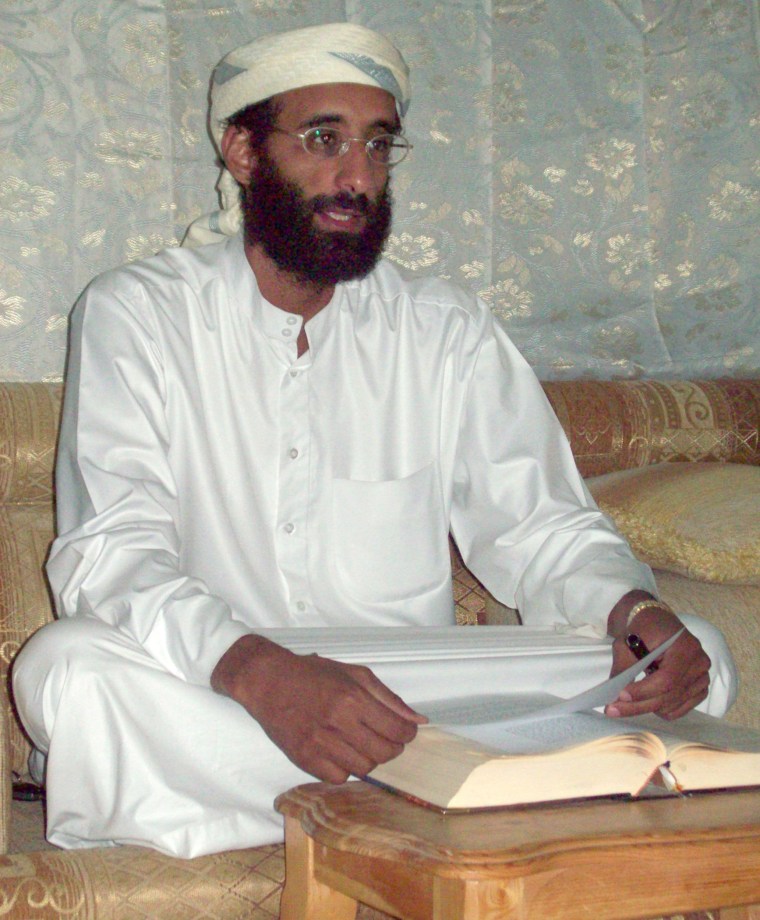The New York/New Jersey bombing suspect’s written praise for radical cleric Anwar al-Awlaki is another grim reminder that this icon of global jihad continues to inspire terror attacks long after he was killed in a U.S. drone strike.
“If you were to look at people who had committed acts of terrorism or had been arrested and you took a poll, you’d find that the majority of them had some kind of exposure to Awlaki,” said one U.S. counter-terrorism official who has followed his impact closely.
When he was arrested Monday after a shootout with police, bombing suspect Ahmad Rahami was carrying a handwritten journal that contained praise of Awlaki, the former head of external operations for al-Qaeda in the Arabian Peninsula, the terror network’s Yemen-based branch. The federal criminal complaint filed in Manhattan Tuesday evening said Rahami’s journal referenced the instructions of terrorist leaders that, "If travel is infeasible, to attack nonbelievers where they live."
Related: N.Y. Bomb Suspect Charged With Using WMDs
"I looked for guidance and… Guidance came [from] Sheikh Anwar. ... Said it clearly attack the Kuffar [non-believers] in their backyard,” Rahami’s journal said, according to the complaint. One of Awlaki’s central tenets of jihad was for Western recruits to launch attacks close to home.
The notebook also mentioned two deadly U.S. attacks that were inspired by Awlaki: The Boston Marathon bombings of 2013 and the deadly 2009 mass shooting at Fort Hood in Texas. Both were launched by men radicalized into action by the mild-mannered, U.S.-born cleric, who once preached at mosques in San Diego and Virginia.
Awlaki was killed by U.S. Hellfire missiles in September 2011 while riding in a car in Yemen. But he lives on through a remarkable library of videos, audio recordings and writings that are easily accessible on the internet.
The Counter Extremism Project has counted 77 extremists with ties to Awlaki — 43 in the U.S. and 34 in Europe.
Here are some of the individuals in high-profile U.S. terrorism cases who were either in contact with Awlaki while he was alive, or inspired by his words before and after his death:
- Ahmed Abdulkadir Warsame, a Somali who was captured in April 2011 and charged with being the liaison between al-Qaeda and al-Shabab, the Somali terrorist group, was believed to be in direct contact with Awlaki.
- Fort Hood shooter Nidal Malik Hasan, an Army psychiatrist who killed 13 and wounded many more in Texas in November 2009, had actually exchanged emails with Awlaki.
- Umar Farouk Abdulmutallab, convicted in the Christmas 2009 attempted bombing of a Northwest Airlines flight over Detroit, traveled to Yemen to make contact with Awlaki, whose teachings he had been following. Abdulmutallab stayed at Awlaki's house, and the cleric then directed the young Nigerian's participation in the failed bomb plot.
- Faisal Shahzad, captured and convicted after plotting in May 2010 to detonate a bomb-laden SUV in Times Square, was inspired by Awlaki.
- Boston Marathon bomber Dzhokhar Tsarnaev, who with his brother Tamerlan exploded backpack bombs in April 2013, killing three and injuring 264 others.
- Mohammad Youssef Abdulazeez, who shot dead four Marines and a Navy sailor in Chattanooga in July 2015.
- Syed Rizwan Farook, one of the shooters in the December 2015 San Bernardino mass shooting that killed 14.
- Omar Mateen, who killed 49 people and wounded 53 others in a June 2016 mass shooting at Pulse nightclub in Orlando.
Awlaki's presence in terrorism cases has been "constant" since 2007, when he was identified as an influence in a planned terrorist attack on Ft. Dix in New Jersey, according to Karen Greenberg of Fordham Law School's Center on National Security.
The center surveyed 287 jihadist cases from 2007 to 2015 at the request of NBC News and found some tie to Awlaki or his rhetoric in 65 of them, according to government documents and media reports.
The study broke down his influence into four categories: Direct email contact, personal meetings and training, directing or inciting a specific attack and, increasingly after his death, general influence and inspiration.
"Starting with al-Qaeda, he essentially schooled the next generation in how to take the message of violent jihad forward,” Greenberg told NBC in 2015.
Experts told NBC News that Awlaki is far more influential for a generation of young wannabe jihadists than any other terrorist leader alive or dead, including al-Qaeda chieftain Osama bin Laden and his successor, Ayman al-Zawahiri.
Awlaki spent many years living and preaching in the United States. According to epxerts, his popularity and influence is particularly enduring among Western followers because they consider his writings, teachings and sermons to be much more relatable than those of an elder generation of radical clerics.
Said one expert, “He is a common denominator. He’s like a rock star. He’s famous. And he’s going to be famous for a long time.”

